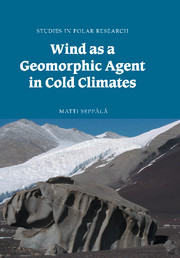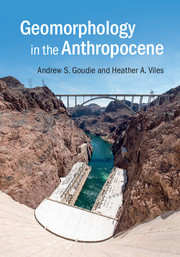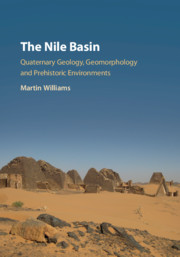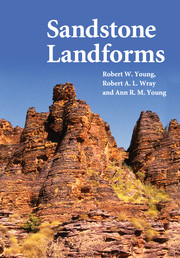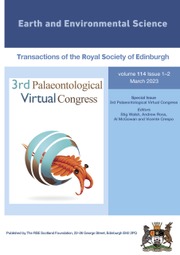Wind as a Geomorphic Agent in Cold Climates
This book was first published in 2004. Wind erosion and deposition are important factors in cold climates because of the open space and scarce vegetation. Aeolian processes connected with sand drift in polar environments are similar to those in deserts but in cold environments, frost and snow also play an important role. The Arctic is characterised by strangely eroded rocks, wind-formed lakes, sand dunes and loess deposits that owe their formation to aeolian processes controlled by frost and snow cover. Wind as a Geomorphic Agent in Cold Climates presents a detailed description and explanation of these wind-generated polar landforms. It includes numerous illustrations that will assist the reader in identifying and interpreting these features; both modern-day and those preserved in the geological record. This book provides an important introduction to this area of geocryology and will form a useful reference for graduate students and researchers in a variety of fields, including geomorphology, geology and environmental science.
- Brings together material that has not previously been published in English
- Includes information about high-latitude features that are not discussed in other aeolian geomorphology books
- Contains numerous illustrations and photographs to enable the reader to identify and interpret these geomorphological features
Reviews & endorsements
'The title reflects the contents, and the author, precise, well-organized, clearly stated, an impressive contribution to the 'Studies in Polar Research' series.' Boreas Book Reviews
'This volume; adds a valuable and necessary contribution to the available material on cold climate processes and landforms. Although the effects of wind have been long recognized, this is the first volume to comprehensively deal with its attributes and effects in present and past cold environments … this is a very valuable volume that fills a significant gap. The book is not only of direct interest to cold environment geomorphologists but should also interest biologists - and has direct connections with those interested in the role of wind in hot desert environments (for which the overlaps are many) … I would also recommend it to anyone actively involved in cold environment geomorphic studies as a text you need in your office for quick and ready reference.' Antarctic Science
'… an original and substantive book … it provides a masterly overview that exposes the reader to some important, fascinating, but under-researched phenomena.' Progress in Physical Geography
Product details
July 2012Paperback
9781107405523
378 pages
244 × 170 × 20 mm
0.6kg
Available
Table of Contents
- Acknowledgements
- 1. Introduction
- 2. Delimitation and characterization of cold environments
- 3. General wind patterns in polar regions
- 4. Wind drift of mineral material
- 5. Abrasion
- 6. Deflation
- 7. Question of oriented lakes
- 8. Accumulation
- 9. Wind directions interpreted from field evidence
- 10. Ice wedge casts and sand wedges
- 11. Snow
- 12. Drift of snow
- 13. Snow accumulation
- 14. Deflation of snow cover
- 15. Snow and frost formation
- 16. Aeolian landforms indicating palaeowind conditions
- References
- Index.

